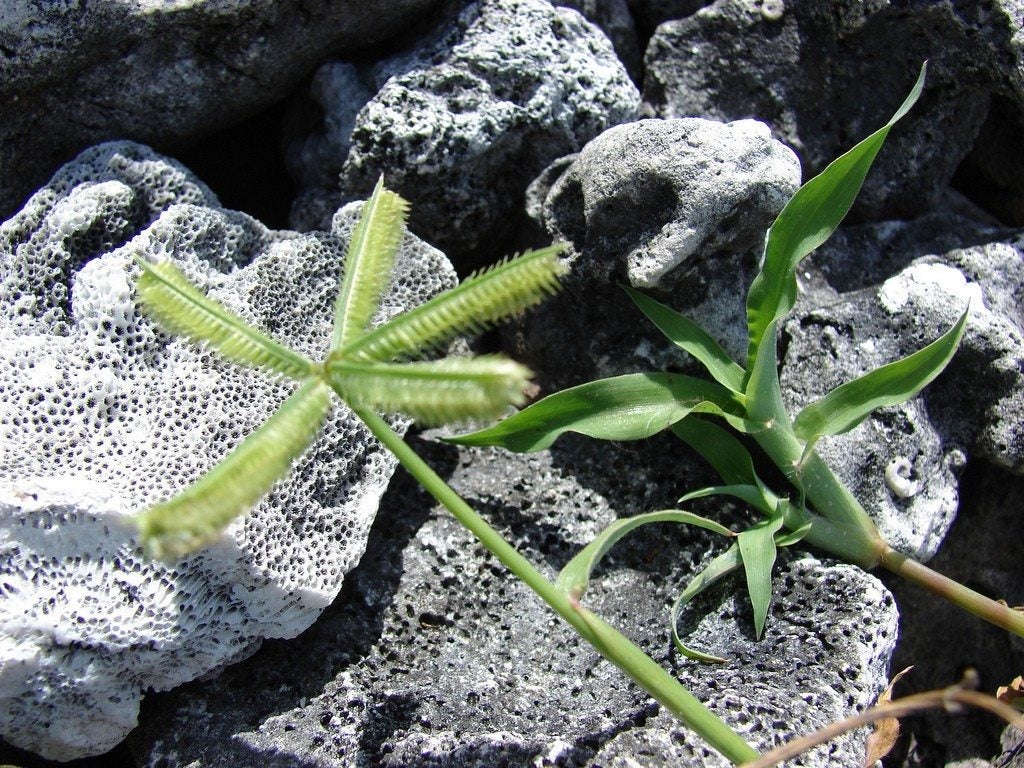Control Of Crowsfoot Grass: How To Get Rid Of Crowsfoot Grass Weed


Beach grasses are useful to establish erosion control and stabilize soil. Crowsfoot grass (Dactyloctenium aegyptium) is helpful in holding sand and light soils where wind, rain and exposure cause depletion and topographical damage. What is crowsfoot grass? This grass is native to Africa, Asia, Australia and South America but has naturalized in the East Coast and several southwestern states. Although it does create a spreading mat of roots that holds soil, it is an invasive weed of turf grasses and open, exposed soils. Crowsfoot grass weed is considered a problem species for croplands and managed spaces.
What is Crowsfoot Grass?
Crowsfoot grass is not a true member of the grass family but does produce similar blade-like foliage covered in fine hairs. Blades are flat with rolled ligules. It is characterized by unique five-spiked flowers that resemble a crow's foot. The roots form a mat with rooting nodes on each lower culm. The plant grows up to 2 feet tall and reduces light to the intended grass species. Crowsfoot grass weed is an annual grass that thrives in warm climates and is present in summer. The flowers produce prolific seeds, which spread and establish quickly. It is found in ditches, scrub and disturbed areas, especially in sandy soil.
Crowsfoot Grass Control
Crowsfoot grass weed invades lawns competing with the existing species for space, nutrients and moisture. It can also crowd out the sought after species and reduce the appearance of the turf. For these reasons, control of crowsfoot grass is an essential part of turf grass management in coastal and southern regions. Crowsfoot grass control is achieved through cultural, mechanical or chemical means.
Cultural Control of Crowsfoot
Hand weeding and practicing excellent turf grass management are the least invasive methods of killing crowsfoot grass. Lawns with thick, healthy grass offer inhospitable pockets for the weed to take hold. The plants die back in winter, but new seedlings form in spring in dead zones of lawn grass.
Mechanical Control of Crowsfoot Grass
In addition to good turf management, it is important to keep seed heads from forming. Regular mowing and trimming will reduce these flowers, which can produce a bumper crop of seeds every summer. Combined with hand pulling and vigilance, this method is adequate to prevent a crowsfoot grass weed take over and preserve your lawn.
Killing Crowsfoot Grass with Chemicals
Pre-emergent herbicides are preferable for control of crowsfoot grass in early spring. Any formula useful for crabgrass or goosegrass management provides effective control for crowsfoot. Suggested formulas will contain Oryzalin, Bensulide, Oxadiazon or Pendimethalin. Post-emergence herbicides provide excellent containment of the grass as long as applications are done before the seed heads are set. Read any chemical application directions carefully and do not use in windy conditions. Some formulas are not safe for use on certain varieties of turf grass, so read the product information carefully. Note: Any recommendations pertaining to the use of chemicals are for informational purposes only. Specific brand names or commercial products or services do not imply endorsement. Chemical control should only be used as a last resort, as organic approaches are safer and more environmentally friendly
Sign up for the Gardening Know How newsletter today and receive a free copy of our e-book "How to Grow Delicious Tomatoes".

Bonnie Grant is a professional landscaper with a Certification in Urban Gardening. She has been gardening and writing for 15 years. A former professional chef, she has a passion for edible landscaping.